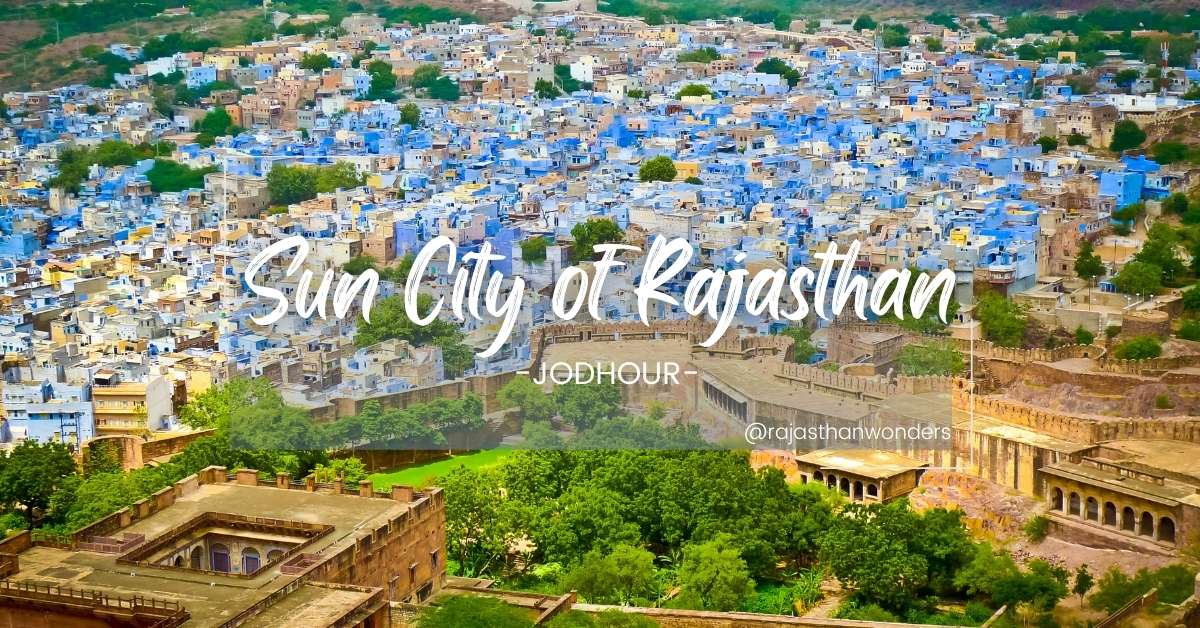Jodhpur, Blue City or Sun City of Rajasthan, India – a place full of history and remarkable facts! If you’re looking for a reliable source about this city’s incredible story – look no further than our blog post! For thousands of years, this city has been regarded as a dazzling gem in northern India’s majestic desert region.
Keep reading if you like history and fun facts because we are about to take you on an unforgettable journey through the past, present, and future of Sun City. Come explore with us as we delve into fascinating facts about Sun City, Rajasthan’s captivating gem which continues to dazzle visitors from near and far!
Table of Contents
History of Sun City of Rajasthan
The history of Jodhpur dates back to 1459 when Rao Jodha founded the city as part of his kingdom after defeating the local Rajputs. Jodha was of the Rathore dynasty, a clan that had formerly ruled parts of present-day Rajasthan.
The city quickly grew in size and influence due to its strategic placement on trade routes between India and Persia, making it an important commercial and cultural centre.
In the 18th century, Jodhpur became a princely state under the reign of the Rathore rulers. It remained so until India’s independence in 1947.
Why Jodhpur Called as Sun City
Jodhpur is called the “Sun City” for two reasons.
- The city experiences sunny, bright weather all year long: The Thar Desert, a hot and dry desert environment, is where Jodhpur is situated. From 20 degrees Celsius (68 degrees Fahrenheit) in the winter to 40 degrees Celsius (104 degrees Fahrenheit) in the summer, Jodhpur experiences a wide range of typical temperatures. The yearly average rainfall in the city is only 250 millimeters (10 inches), which is extremely low.
- The houses in Jodhpur’s old city are painted blue: The blue color makes the houses cooler by reflecting sunlight. In a hot desert climate, this is important.
The combination of these two factors has earned Jodhpur the nickname “Sun City.”
Here are some other reasons why Jodhpur is called the Sun City:
- The city is located in the state of Rajasthan, which is known as the “Land of the Sun.”
- Jodhpur was founded by Rao Jodha, a Rajput warrior who was known as “Suryavanshi,” or “descendant of the Sun.”
- The Mehrangarh Fort in Jodhpur is also referred to as the “Sun Fort.”
No matter what the reason, Jodhpur is a city that is truly blessed with the sun. The city’s bright and sunny weather makes it a popular tourist destination, and the blue houses of the old city add to its unique charm.
Why Jodhpur Called as Blue City
Jodhpur, the second largest city in Rajasthan, is famously known as the “Blue City” of India. But why is this ancient city bathed in such vivid blue hues? The answer lies in history, culture and tradition. There are various reasons attributed to the blue color choice:
The Tradition of Blue
Step back into history, and you’ll find that the tradition of painting houses blue in Jodhpur goes back for generations. The practice can be traced back to the Brahmin community, who initially painted their houses blue to set them apart and signify their high social status.
A Splash of Culture and Beliefs
But why blue? The reasons are as captivating as the city itself. Blue holds deep cultural and aesthetic significance in Jodhpur. For one, blue is associated with Lord Shiva, a revered deity in Hinduism, symbolizing both divinity and infinity. The blue color is believed to ward off evil spirits and invite positive energy into homes.
Exploring the Cultural Tapestry
Mehrangarh Fort: A Blue Jewel
At the heart of Jodhpur’s charm stands the Mehrangarh Fort, an architectural masterpiece that overlooks the city. Its imposing blue walls, adorned with intricate carvings and designs, exemplify the city’s blue aesthetic. The fort’s history is woven into the fabric of Jodhpur’s identity, offering a glimpse into its royal past.
Festivals and Traditions
Jodhpur’s culture is as colorful as its facades. The city hosts vibrant festivals that celebrate its rich heritage. The Marwar Festival and the Rajasthan International Folk Festival attract visitors from around the world, providing an opportunity to experience the city’s traditional music, dance, and art.
Conclusion: Blue or Sun City of Rajasthan
In the middle of the dry land in Rajasthan, there’s a place called Jodhpur. It’s a city that’s really sunny and looks blue because of the special color of its buildings. People call it the “Suncity” and “Blue City” not just for fun, but because these names show how amazing the city is. Jodhpur has a lot of history and culture, which makes it very interesting. The bright sun and the blue buildings don’t just look nice, they also mean that the city is strong and always attractive.
Also Read:

